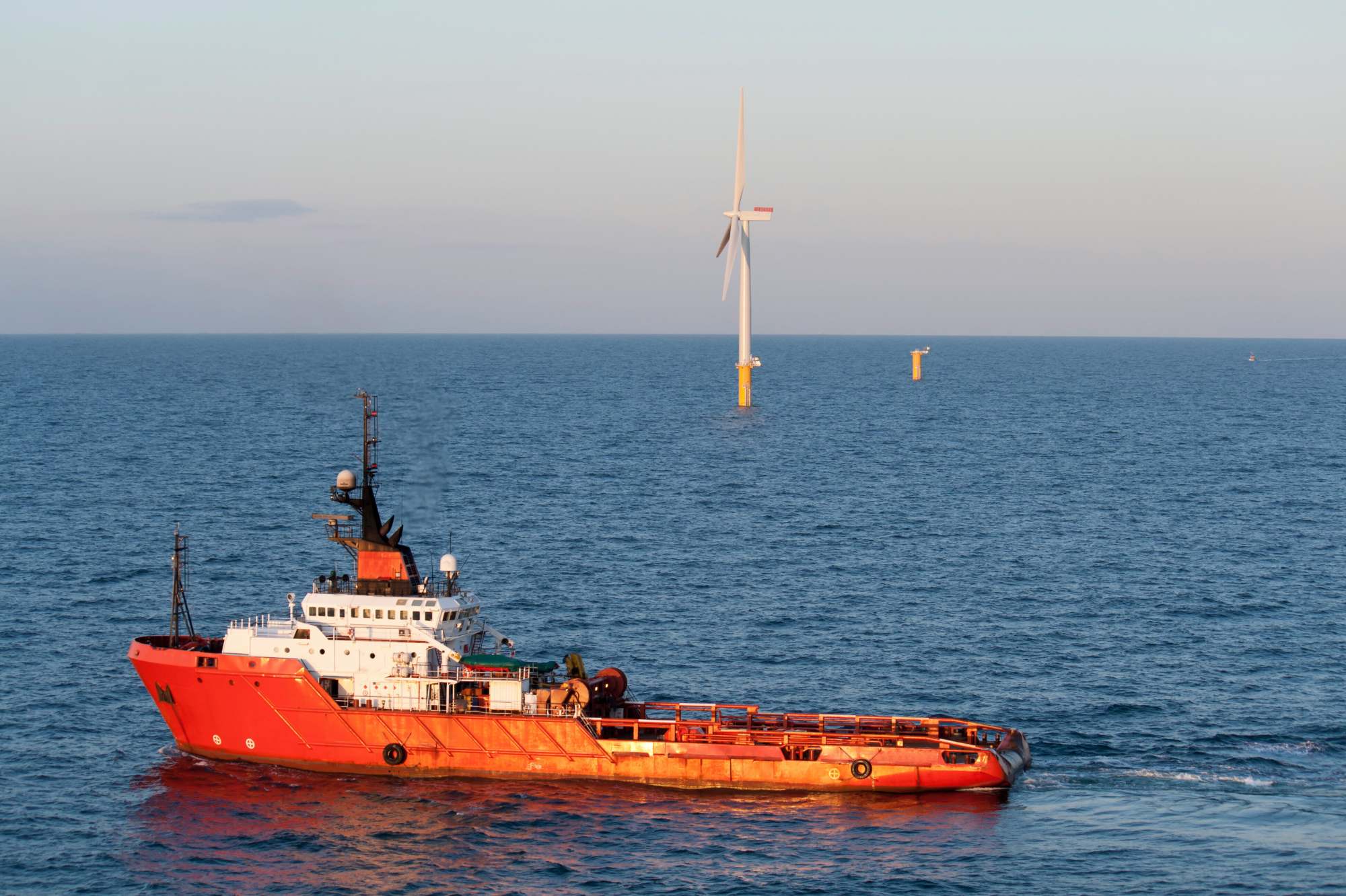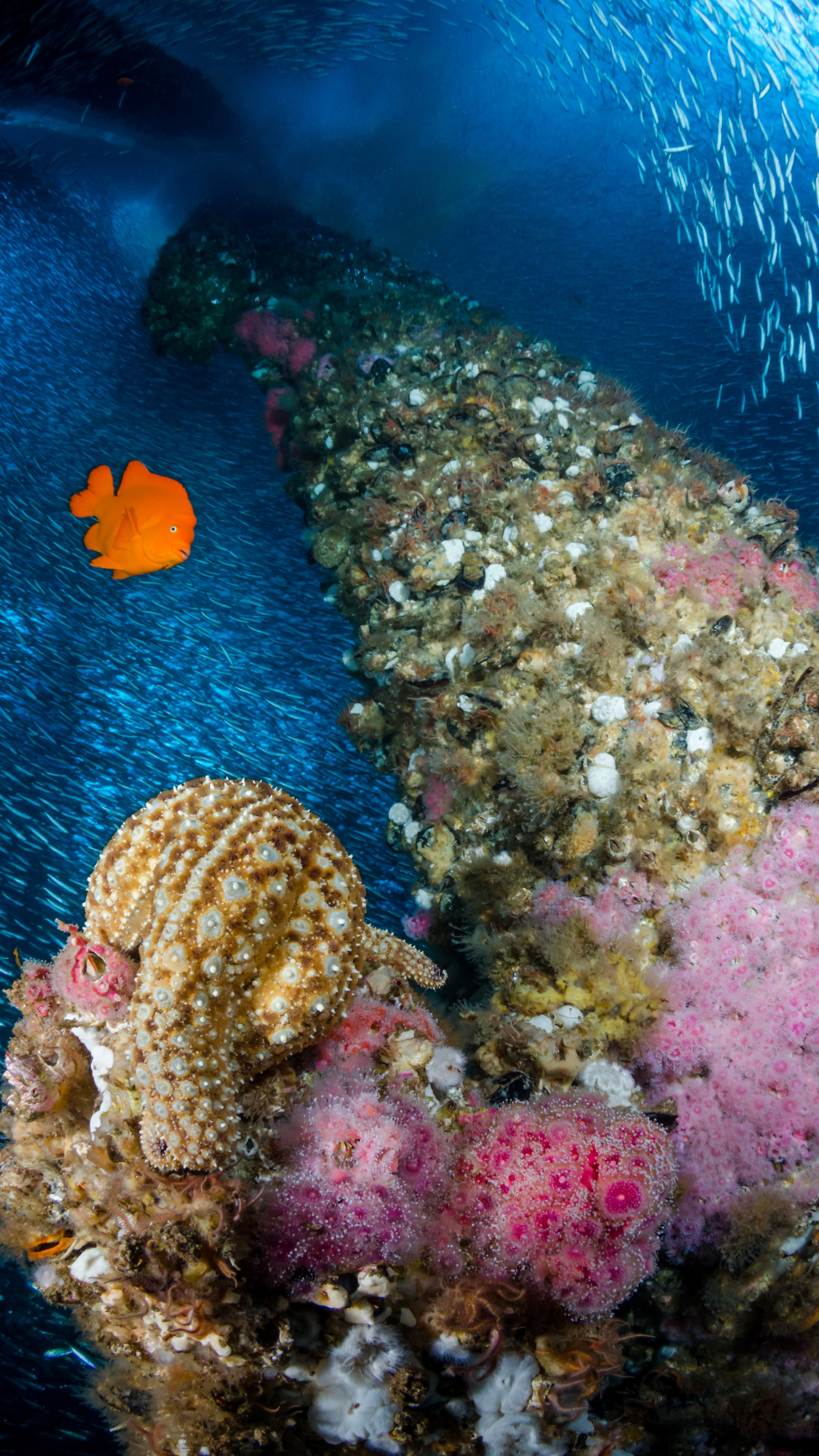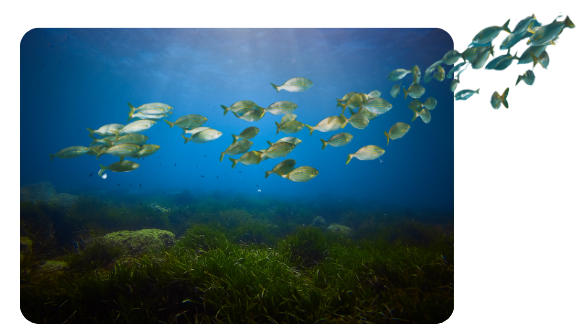Story
“Strategically placed” offshore structures could enhance ecosystem resilience
06 May 2025
A new study led by Dr Molly James from Plymouth Marine Laboratory as part of the DREAMS project has introduced a novel approach to assessing the marine connectivity of man-made offshore structures – such as wind turbines – offering new insights into the ecological role of these structures in the North Sea.

Image caption: A windfarm under construction off the English coast
What is marine connectivity? Dr James explains:
“Marine connectivity is the movement of animals, plants, nutrients and genetic material between patches of habitat or populations. They are essentially the roads that connect spaces and ensure our biodiversity is healthy, resilient and persistent .”
“Marine artificial structures, including disused oil rigs and wind farms, introduce habitat for animals and plants into our seas that may have been lost, or is entirely new.”

Image caption: The undersea foundations of “Eureka’ – an oil rig nearing the end of its operational life in Southern California. Installed in 1984, it has been operational for decades and has grown a thriving ecosystem of marine life comparable to natural coral reef systems. This is known as the “artificial reef effect’.
“The number and placement of these offshore structures may have major impacts on connectivity by affecting dispersal pathways. Ocean currents and wind patterns act like highways, carrying larvae between structures, establishing biodiversity and interconnecting structures. The presence of these structures can function as ‘stepping stones’ – creating bridges between patches of habitat that were previously unconnected.”
With over 1,500 offshore oil and gas platforms in the North Sea – many nearing the end of their operational life – decommissioning decisions have become a pressing issue. While some regulations mandate complete removal of offshore installations in most cases, there is growing debate over whether repurposing or partial removal could provide ecological benefits.
This new study, published in Ecological Informatics, sheds light on how artificial structures could act as ‘stepping stones,’ influencing species dispersal and connectivity within marine ecosystems, and evaluates connectivity under two scenarios: existing structures – releasing particles from cells where structures are currently present, and “everything is everywhere”, allowing us to understand how specific placement of structures might affect connectivity across marine space.
Co-authors include PML’s Dr Gennadi Lessin, Dr Muchamad Al Azhar, and our late Professor Paul Somerfield, in addition to Dr Michael Bedington of NIVA (Norwegian Institute for Water Research), Dr Charlotte H. Clubley of the University of Plymouth, and Dr Antony M. Knights Associate Professor in marine environmental sustainability at University College Cork.
The study introduces the ‘everything is everywhere’ framework, a method that combines hydrodynamic modelling, particle tracking, and graph network analysis to evaluate marine connectivity. By applying a newly developed Connectivity Importance Index (CII), the research identifies key connectivity hotspots – areas where ecological connections are strongest, providing crucial information for future sustainable marine spatial management.
“Our findings show that some high-connectivity regions extend beyond existing infrastructure,” explains Dr. James. “This suggests that future offshore developments, such as renewable energy installations, could be strategically positioned to support ecosystem resilience. It also highlights areas where repurposing existing structures – rather than removing them entirely – may offer greater ecological benefits.”
Traditional connectivity assessments have typically focused on regions with existing structures, limiting their scope. This study broadens the perspective by analyzing larval dispersal and habitat connectivity across the entire North Sea, offering a more complete understanding of regional-scale dynamics.
In contrast to earlier models that concentrate solely on connectivity between known habitats, the new ‘Everything is Everywhere’ framework delivers a region-wide view of potential connectivity. This comprehensive approach enhances its value as a tool for guiding conservation strategies, marine protected area (MPA) planning, and offshore infrastructure development.
“This relocatable methodology provides valuable insights for marine managers, policymakers, and industry stakeholders,” adds Dr. James. “It allows us to assess connectivity even in areas where habitat data is limited, ensuring that decisions about decommissioning and new developments are guided by ecological evidence.”
As offshore wind energy expansion accelerates, and discussions around decommissioning continue, the findings of this study offer a critical perspective on how to balance human activity with marine conservation. By identifying areas of high connectivity, the research supports ecologically coherent marine spatial planning, ensuring that future interventions are sustainable and biodiversity-friendly.
Related information
The DREAMS project was led by Plymouth Marine Laboratory (PML, UK) and includes the University of Plymouth (UoP, UK), Centre for Environment, Fisheries and Aquaculture Science (Cefas, UK) and the Harte Research Institute for Gulf of Mexico Studies (HRI) at Texas A&M University Corpus Christi (TAMUCC, USA).
